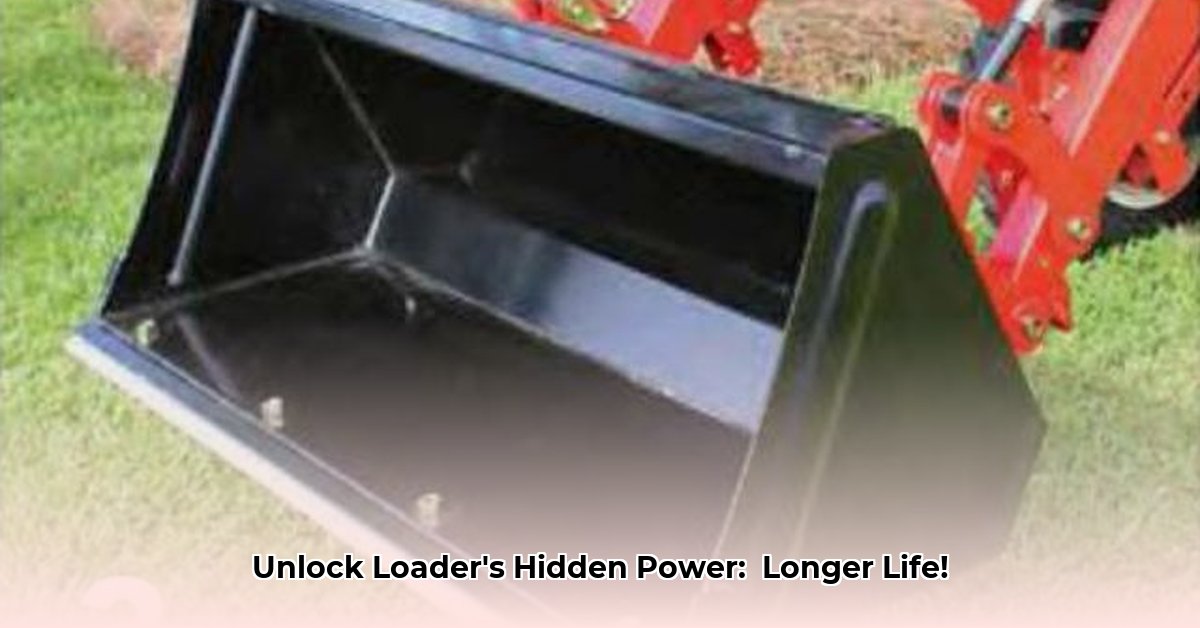
Understanding Loader Bucket Cutting Edges: A Comprehensive Guide
Replacing loader bucket cutting edges is a costly and time-consuming process. This guide provides a comprehensive understanding of available technologies and best practices to maximize the lifespan of your loader bucket cutting edges, ultimately saving you time and money. We'll delve into the different types of cutting edges, their design features, selection criteria, maintenance procedures, and cost implications, offering actionable advice for construction professionals and equipment owners alike. This detailed analysis will empower you to make informed decisions, optimizing your equipment's performance and longevity. For more on loader applications, check out this helpful resource.
Types of Cutting Edges: Material Properties and Applications
The material of your cutting edge significantly impacts its durability and lifespan. Several materials offer varying levels of hardness, wear resistance, and impact resistance, each best suited for specific applications.
High-Carbon Steel: A cost-effective option providing a good balance of hardness and toughness. Suitable for general-purpose tasks and less abrasive materials. Think of it as a workhorse for everyday use.
Boron Steel: Offers superior strength and wear resistance compared to high-carbon steel. Ideal for abrasive materials and rocky terrain, justifying its higher initial cost through extended lifespan.
Hardfacing Alloys: Applied as a protective layer, these alloys dramatically increase wear resistance, making them perfect for extremely abrasive materials. Their impact resistance might be lower than other options.
Ceramic Composite Materials: These cutting-edge materials boast exceptional durability and wear resistance. However, their higher cost and potentially lower impact resistance limit their application to highly specialized, high-wear scenarios.
| Material | Hardness (Approximate Rockwell C) | Wear Resistance | Impact Resistance | Cost | Best Suited For |
|---|---|---|---|---|---|
| High-Carbon Steel | 45-55 | Medium | Medium | Low | General-purpose tasks, less abrasive materials |
| Boron Steel | 55-65 | High | High | Medium | Abrasive materials, tough conditions |
| Hardfacing Alloys | 60-70 | Very High | Medium | Medium-High | Extremely abrasive materials |
| Ceramic Composite Materials | 70+ | Very High | Low | High | Specialized, extreme abrasion applications |
(Note: Hardness values are approximate and can vary based on specific alloy composition and manufacturing processes. Further research is needed to establish precise comparative data for all materials.)
Cutting Edge Designs: Optimizing for Cost and Replaceability
Cutting edge designs influence their cost-effectiveness and ease of replacement. The three main design types are:
Reversible Blades: These double the lifespan of the cutting edge by allowing for a simple flip when one side wears out, significantly reducing replacement costs and downtime. Isn't that a smart way to save money?
Bolt-on Designs: Their ease of replacement minimizes downtime. Damaged edges can be quickly swapped, reducing interruptions to your work.
Weld-on Designs: These offer higher durability but require welding expertise for replacement, increasing labor costs.
[Insert placeholder image here: Reversible blade] [Insert placeholder image here: Bolt-on blade] [Insert placeholder image here: Weld-on blade]
Selecting and Maintaining Cutting Edges: A Step-by-Step Guide
Selecting the right cutting edge depends on the type of work, soil conditions, and budget. Consider the lifecycle cost (LCC), which encompasses the initial cost, replacement frequency, and downtime. A more expensive, durable edge might prove cheaper over time.
Step-by-Step Bolt-on Cutting Edge Replacement:
Safety First: Always disconnect the loader and secure the tractor. Wear appropriate safety gear.
Remove the Worn Edge: Use correct tools.
Clean the Mounting Surface: Remove all dirt and debris.
Install the New Edge: Align precisely and tighten evenly.
Inspection: Ensure proper alignment and secure fastening.
Cost Analysis: Evaluating Lifecycle Costs
Don't just consider initial cost; factor in replacement frequency and downtime. A reversible blade, while more expensive initially, can significantly reduce long-term costs. A detailed LCC analysis, incorporating all relevant factors, is crucial for making informed decisions. What are the specific cost savings associated with reversible blades in your operation?
Industry Trends and Future Outlook
Industry standardization efforts are underway to improve compatibility across different loader models. The development of new, highly durable materials like advanced ceramic composites promises further advancements in wear resistance and lifespan. Technological advancements continually improve efficiency and reduce costs.
Conclusion: Maximizing Efficiency and Extending Lifespan
Choosing the right loader bucket cutting edge is critical for maximizing equipment lifespan and minimizing costs. By considering material properties, design features, and performing proper maintenance, you can significantly extend the life of your cutting edges and enhance your overall operational efficiency. Remember to always prioritize safety and perform a thorough lifecycle cost analysis before making a purchase decision. The insights provided in this comprehensive guide empower you to make informed decisions, driving both efficiency and profitability in your operations.